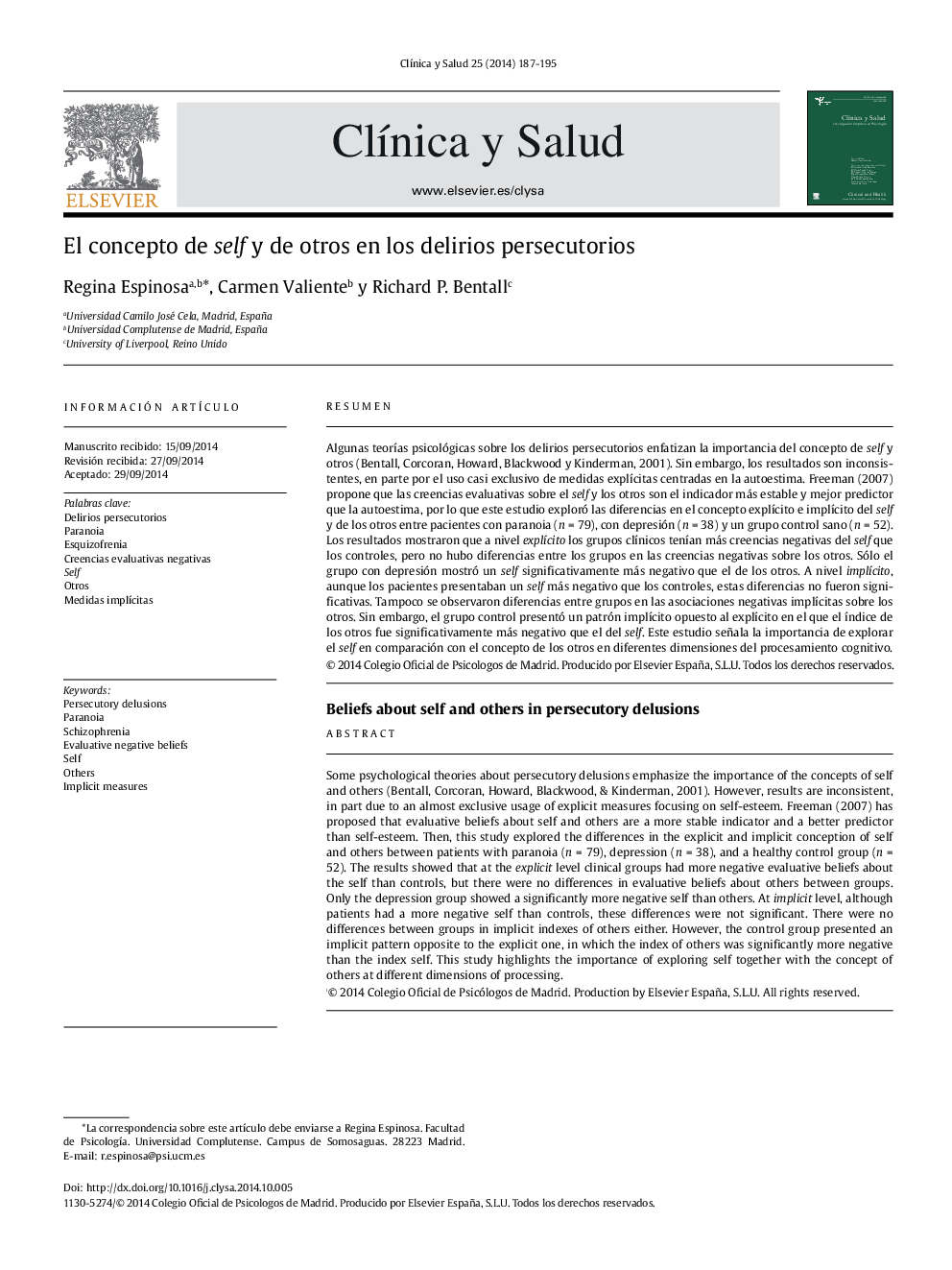| Article ID | Journal | Published Year | Pages | File Type |
|---|---|---|---|---|
| 903546 | Clínica y Salud | 2014 | 9 Pages |
ResumenAlgunas teorías psicológicas sobre los delirios persecutorios enfatizan la importancia del concepto de self y otros (Bentall, Corcoran, Howard, Blackwood y Kinderman, 2001). Sin embargo, los resultados son inconsistentes, en parte por el uso casi exclusivo de medidas explícitas centradas en la autoestima. Freeman (2007) propone que las creencias evaluativas sobre el self y los otros son el indicador más estable y mejor predictor que la autoestima, por lo que este estudio exploró las diferencias en el concepto explícito e implícito del self y de los otros entre pacientes con paranoia (n = 79), con depresión (n = 38) y un grupo control sano (n = 52). Los resultados mostraron que a nivel explícito los grupos clínicos tenían más creencias negativas del self que los controles, pero no hubo diferencias entre los grupos en las creencias negativas sobre los otros. Sólo el grupo con depresión mostró un self significativamente más negativo que el de los otros. A nivel implícito, aunque los pacientes presentaban un self más negativo que los controles, estas diferencias no fueron significativas. Tampoco se observaron diferencias entre grupos en las asociaciones negativas implícitas sobre los otros. Sin embargo, el grupo control presentó un patrón implícito opuesto al explícito en el que el índice de los otros fue significativamente más negativo que el del self. Este estudio señala la importancia de explorar el self en comparación con el concepto de los otros en diferentes dimensiones del procesamiento cognitivo.
Some psychological theories about persecutory delusions emphasize the importance of the concepts of self and others (Bentall, Corcoran, Howard, Blackwood, & Kinderman, 2001). However, results are inconsistent, in part due to an almost exclusive usage of explicit measures focusing on self-esteem. Freeman (2007) has proposed that evaluative beliefs about self and others are a more stable indicator and a better predictor than self-esteem. Then, this study explored the differences in the explicit and implicit conception of self and others between patients with paranoia (n = 79), depression (n = 38), and a healthy control group (n = 52). The results showed that at the explicit level clinical groups had more negative evaluative beliefs about the self than controls, but there were no differences in evaluative beliefs about others between groups. Only the depression group showed a significantly more negative self than others. At implicit level, although patients had a more negative self than controls, these differences were not significant. There were no differences between groups in implicit indexes of others either. However, the control group presented an implicit pattern opposite to the explicit one, in which the index of others was significantly more negative than the index self. This study highlights the importance of exploring self together with the concept of others at different dimensions of processing.
